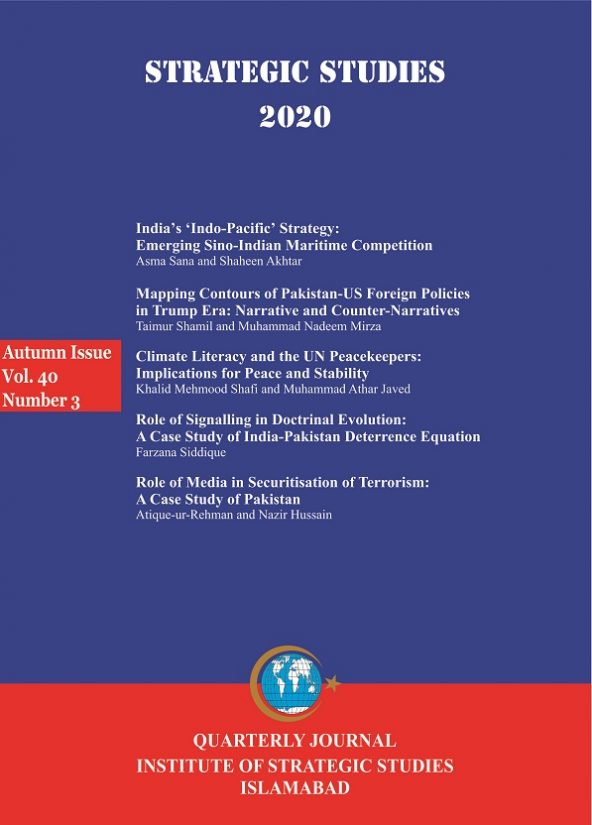Abstract
Deterrence is more of a perception-game than a number-game, therefore, understanding an adversary’s threat perception is important for the survivability of nuclear arsenal and deterrence stability. South Asian strategic stability largely depends on the nature of India-Pakistan deterrence equation. Effective communication of a state’s capability and its resolve to deter its adversaries is central to the effective equation of deterrence. Hence, the instrument of signalling is practiced usually through various means at diplomatic and foreign policy levels. This study argues that the doctrinal-level asymmetry (a consequence of varied threat perceptions), between India and Pakistan, creates an ambiguity in the signalling game. This creates a space for overestimation of adversary’s capabilities on each side which then disturbs deterrence stability. Theory of Signalling-Perception by Robert Jervis that deterrence is a game of perception has been employed in this paper to analyse the role of signalling and perception in the evolution of India-Pakistan declaratory nuclear policies ─ ultimately responsible for shaping the South Asian strategic stability.














